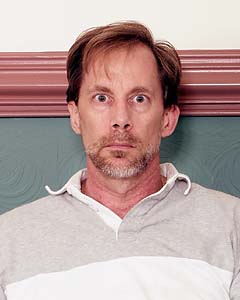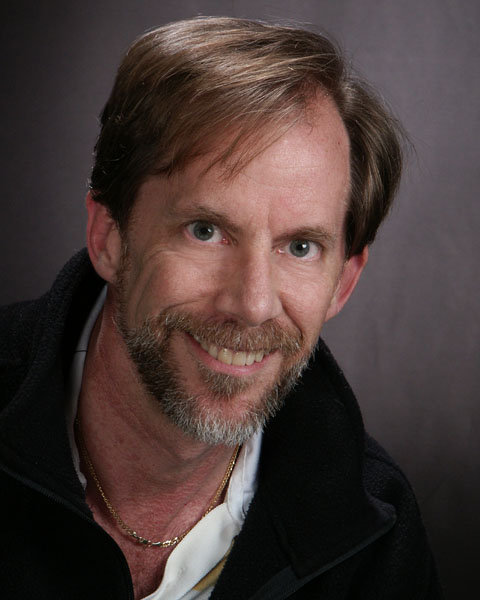There have been several scientific studies which have attempted to quantify beauty. Most involve showing photos to panels and having them rate which they think is most attractive, then via measurement determining the common denominators in the photos deemed beautiful: shape of face, width of eyes, shape of nose, etc.
Artists dating back to the ancient Greeks, who discovered Pi and the "Golden Mean" have used it as a guide for composition and defining the perfect proportions for human anatomy. Here's a web site which uses the Golden Mean as a criteria for analyzing facial proportions. DaVinci illustrated the Golden Mean principle in his classic illustration of man you can see on the middle of this page. NASA used that DaVinci drawing to depict man on the Pioneer space probe, the first one which exited our solar system. The "rule of thirds" is a loose interpretation of the Golden Mean.
I don't subscribe to the Golden Mean as the "gold standard" for composition but it is useful in the overall context of understanding the elements which make a face or photo feel compelling, harmonious and flowing, or if the convention is not followed either static (centered subject) or in conflict (two subjects on extreme edges of a photo - forcing the eye to choose sides or dart back and forth). Composition is how the message of a photo is packaged and facial angles which set-up the geometric relationships between the eyes, mouth, nose and ears are just one aspect of the overall composition in a portrait.
I have observed over the past 35 years of seriously studying faces that in general, slim symmetrical faces with narrow heads and noses which are really not noticed much (and hide the nostrils) in a full face view are considered by most people in nearly all cultures as being most attractive. Not surprisingly that pretty much describes the face of a typical "face" model for TV or print and many, but not all actors. Actors and other media personality often have less than perfect faces but learn which angles flatter them most (e.g., Robert Redford, Brian Williams of NBC news).
We need to learn to evaluate faces against that cultural norm for beauty, finding a way to make the less than perfect face which walks in the door for a portrait appear as slim in symmetrical as possible, even if the face isn't slim or symmetrical.
Start with a full face view in flat light. It is usually the least flattering angle for most people because the narrower front "mask" of the face (i.e from the eye sockets forward) appear to blend into a much wider head giving making most faces appear to be wide, oval or even as round as a dinner plate.
A precise full face view (both ears appearing the same size) is also where any asymmetry can be detected. Tilted noses, mouths, uneven eye sizes, etc. Asymmetry typically is three dimensional. One eye may be smaller and also further away relative to the camera.
Camera height and distance will affect the appearance of a face. If you can see the nostrils raise the camera. The top of the nose is far more attractive. But for upturned noses its nearly impossible to hide the nostrils but they can be minimized so they don't stare at the viewer like a second set of pupils (which BTW is why they distract).
The oblique pose is the great physician for the asymmetrical face. People actually do have a "best" side and the way to find it is simply by looking at both oblique views and picking the one which your eye tells you is most flattering.
Because faces are 3D and no two are exactly the same there are no rules or magic fractions which will work for all faces. Instead simply keep in mind that a slim, symmetrical well balanced face is considered by most to be attractive and look for the oblique angle which makes the wide far side of the head disappears and the cheekbone pops into view, but not so much the far eye ball is profiled or far side of the face looks too small relative to the near side.
By taking advantage of the perspective created by camera distance and vertical angle relative to the front plane of the face the appearance of the face can be changed. A prominent forehead made less prominent by making it a bit further away from the camera than the chin, or a smaller eye made less noticeable by putting that side closest to the camera.
As with all things in composition unless the indent is to depict stress, tension or conflict there should be balance an harmony between the appearance of the features, except for the eyes which should be the center of attention in a portrait.
Looking at both profiles is also very informative, even if not planning to shoot one. It's the best way to examine the shape of the face front to back, which will help predict how camera perspective will affect the relative size of the parts. For example on some faces the chin and forehead will be even with the base of the nose. For others the forehead and chin may angle back significantly. If shot from the same distance which one would appear to have the bigger nose, even if the noses were exactly the same? How would you prevent that?
If you have not yet read Joe Zeltsman's tutorial you can find it here here. He's one of the first teach the idea of studying precise facial angles. He taught my mentor, so what I described above is similar. Zeltsman observed that a well balanced oblique view with slimming short light was the most flattering combination for the vast majority of people, perhaps about 90%. Monte Zucker, my mentor took that simple formula "to the bank" for over 50 years. So if we start with a short lit oblique view (picking the most flattering of the two) as a starting baseline the odds of producing the most flattering depiction of a person in a photo increases dramatically. Choose the right side and lighting and its possible to turn this lopsided face (mine):

Into a portrait which looks like this:

Read my Mirror vs Camera tutorial for the background on that exercise and how to evaluate faces by mirroring the right and left sides of a full face view. Warning: It might scare even your dog :)
We don't need a camera and lights to study faces. I do it everywhere. Analyzing faces is like a game for me. I do it at work, in the checkout line, walking at the mall, while watching movies, etc. I look at them from as many different angles and lighting as possible trying to figure out which flatters them most. I've got mental classifications for a dozen different nose types.Ever notice you don't see many actors with upturned noses? On the contrary some have tips that hang down so much that a profile is out of the question. But from any other angle you never see their nostrils, just an attractive compound curved frontal view of the tip. .
TV and movies are actually the best teachers. You get the benefit of seeing some very savvy lighting and camera set-ups and how the appearance of the faces of the actors changes when they move slightly from those perfect angles and lighting. TV news interview shows like 60 Minutes afford more of a chance to see variation than movies where each close-up scene only lasts a few seconds and will typically have perfect short lighting and a flattering oblique facial angle in each.
Many learning portraiture don't even stop to consider that one view might look better than the other, or understand cause and effect of the various lighting strategies. Theres only a 90 degree difference between profile and full face and taken 9 degrees at time there's a 1 in 10 chance you'll find the most flattering angle by pure chance! You sure won't get bored because every face is a new adventure.
Holistic Concepts for Lighting
and Digital Photography
This tutorial is copyrighted by © Charles E. Gardner.
It may be reproduced for personal use, and referenced by link, but please to not copy and post it to your site.
You can contact me at: Chuck Gardner
For other tutorials see the Tutorial Table of Contents